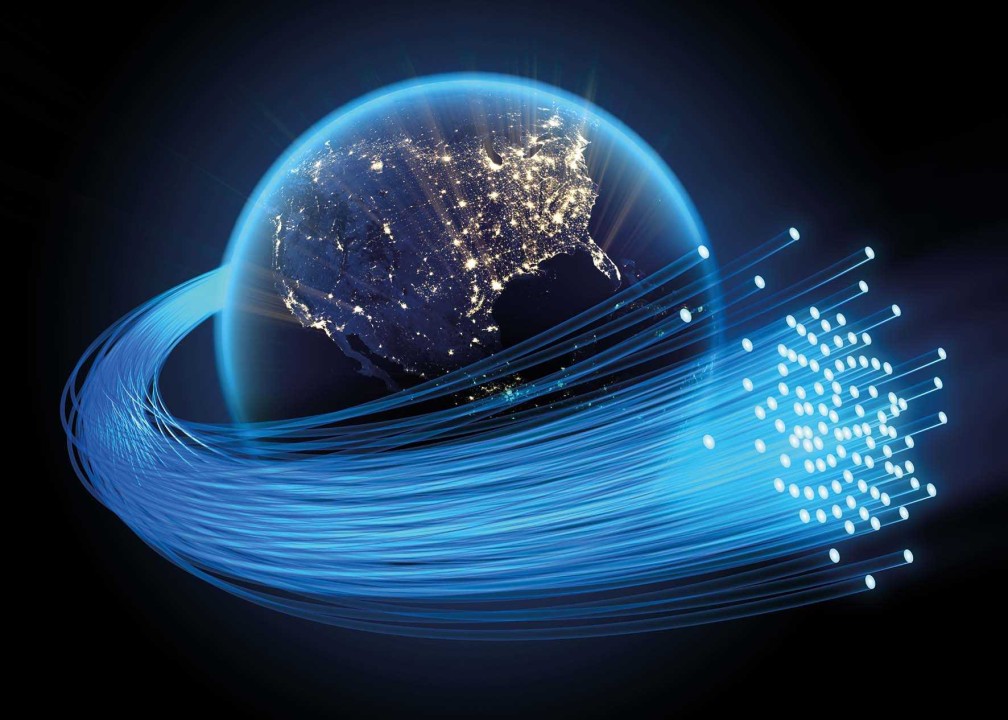
Application of hair removal fiber in laser hair removal instrument solution.
1.What is laser hair removal?
Laser is a focused energy, and the human skin is a relatively translucent structure. This energy can smoothly pass through the surface of the skin and reach the roots of hair, which are the hair follicles. Due to the presence of a lot of melanin in hair follicles, a large amount of laser energy can be preferentially absorbed and ultimately converted into heat energy, causing the temperature of hair follicles to gradually increase, thereby damaging them and causing them to lose their ability to regenerate. Throughout the entire process, the skin itself will not be damaged due to its relatively low absorption of laser energy or the absorption of a small amount of laser energy. Sweat glands and hair follicles exist independently, and laser hair removal only targets melanin in hair follicles. Sweat glands do not have melanin, so they do not absorb laser energy.
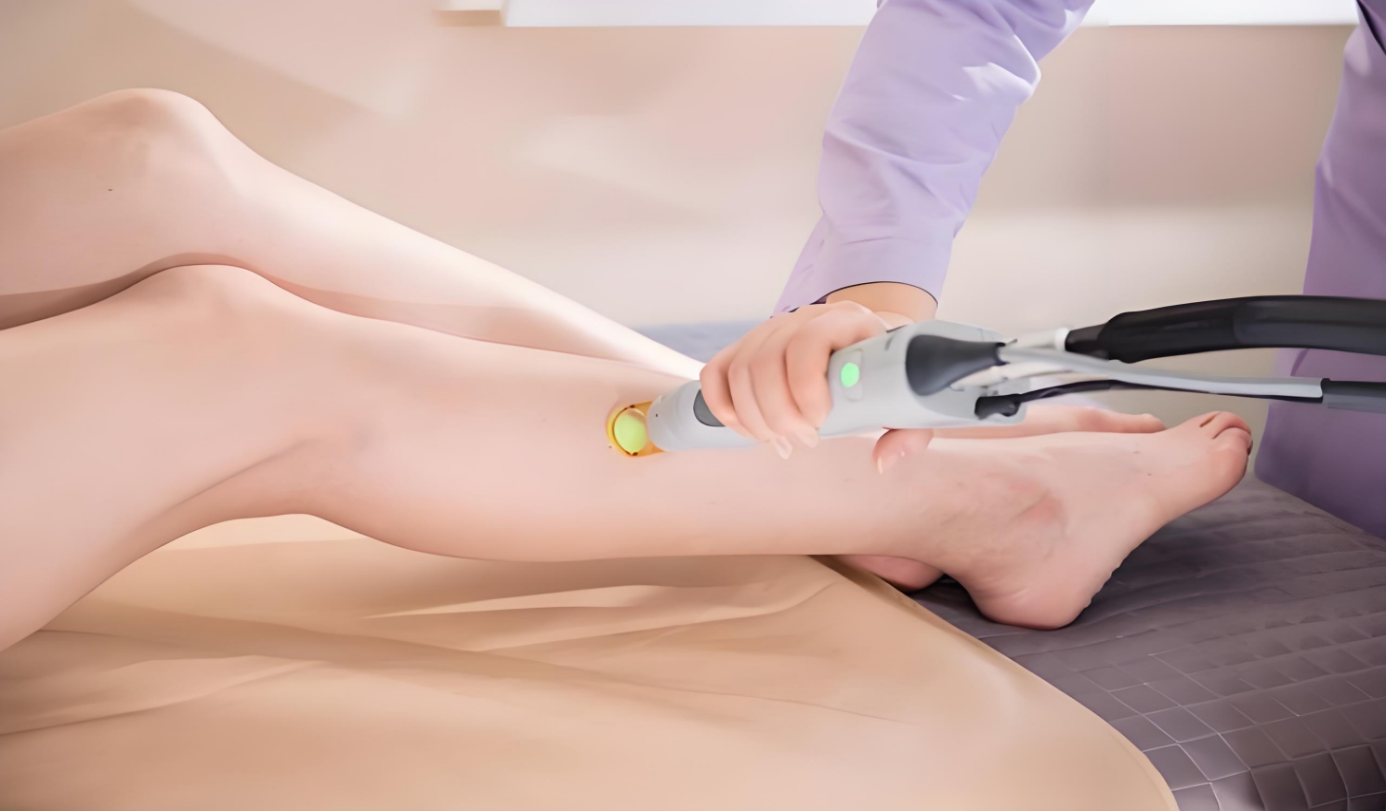
2.Principle of laser hair removal:
The principle of laser hair removal is to utilize the selective photothermal effect of laser, and the specific process is as follows:
(1)selective photothermolysis
Laser emits light of a specific wavelength, which can be absorbed by melanin in hair follicles and converted into heat energy, damaging hair follicle tissue.
(2)Hair follicle destruction
Thermal energy can damage the stem cells and papilla of hair follicles, inhibit hair growth, and ultimately lead to hair loss.
(3)The necessity of multiple treatments
Due to the fact that the hair growth cycle is divided into growth phase, regression phase, and resting phase, laser is mainly effective for hair in the growth phase, so multiple treatments are needed to cover all hair follicles.
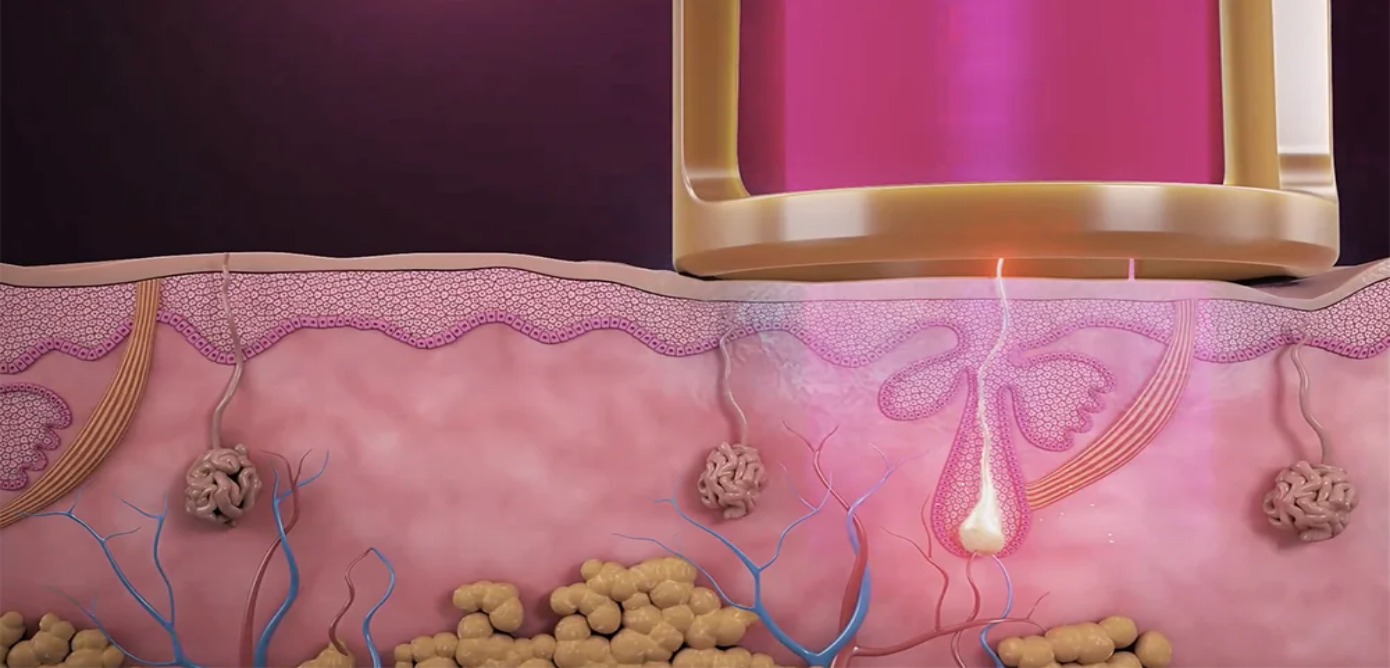
3.Why is fiber optic cable commonly used to transport laser energy in hair removal lasers?
The characteristic of laser hair removal is to destroy hair follicles through the thermal effect of laser, causing them to lose their growth ability. Body hair weight can be treated with laser, and generally 3-5 treatments can achieve permanent hair removal without causing damage to surrounding tissues.
(1)Accuracy
Laser can accurately target melanin in hair follicles, reducing damage to surrounding skin.
(2)efficiency
Fiber optic cables can transmit light without strength loss. This allows the full power of the laser to be transmitted to the treatment area, improving effectiveness.
(3)Efficiency
By destroying hair follicles, hair regeneration can be significantly reduced and the effect is long-lasting.
(4)Safety
The laser energy is completely contained in the fiber optic cable until it reaches the handle. This can prevent accidental exposure of the laser along the path.. Modern laser equipment is equipped with a cooling system to reduce discomfort and skin damage, making the treatment process relatively safe.
(5)Rapidity
The treatment time is short each time, usually only about 30 minutes for large areas such as the legs.
(6)Widely applicable
Suitable for multiple body parts, but the effect varies depending on hair color and skin type, with dark hair and light skin having the best effect.
(7)Multiple treatments
Due to the hair growth cycle, multiple treatments are usually required to achieve the desired results.
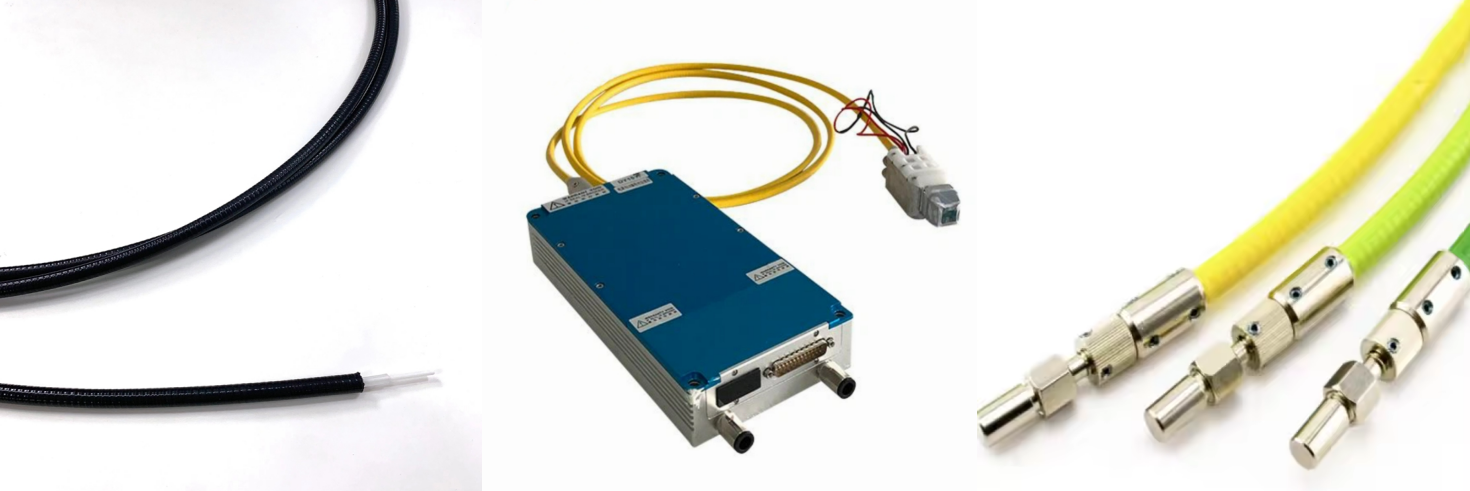
4.What hair removal instruments are laser fiber used for?
(1)Hair removal instrument based on laser wavelength
755nm Alexander laser, 810nm diode laser, 1064nm Nd: YAG laser. The selection of hair removal fibers needs to match the wavelength of the laser instrument.

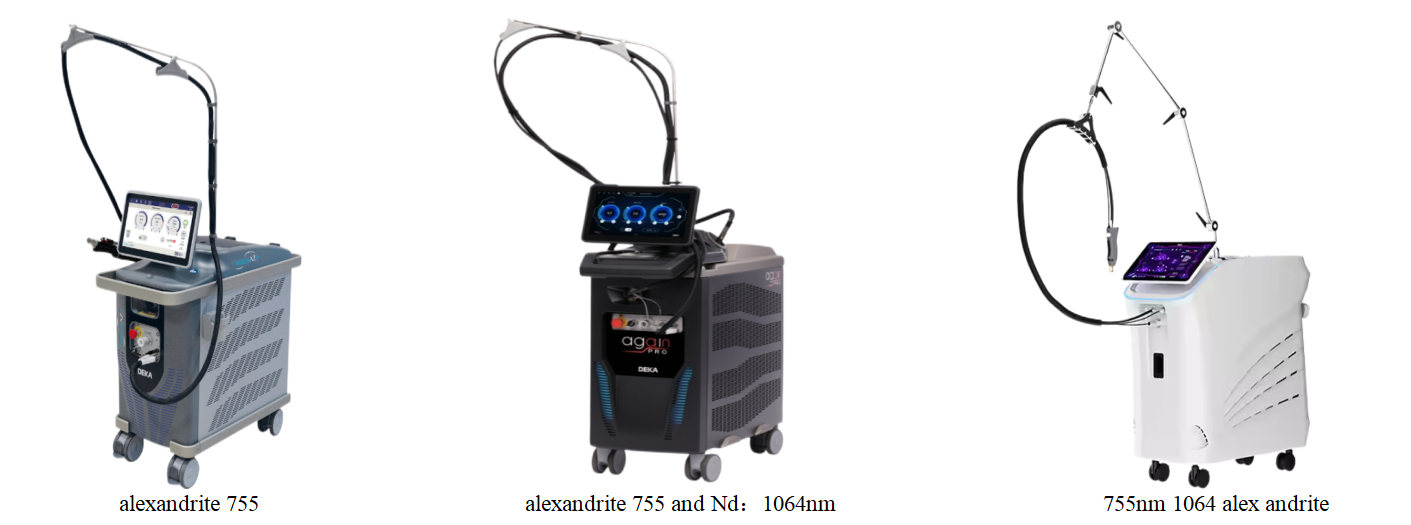
(2)Hair removal instrument based on technology type
Long pulse laser hair removal device, dot matrix laser hair removal device The following are common types of laser hair removal devices:

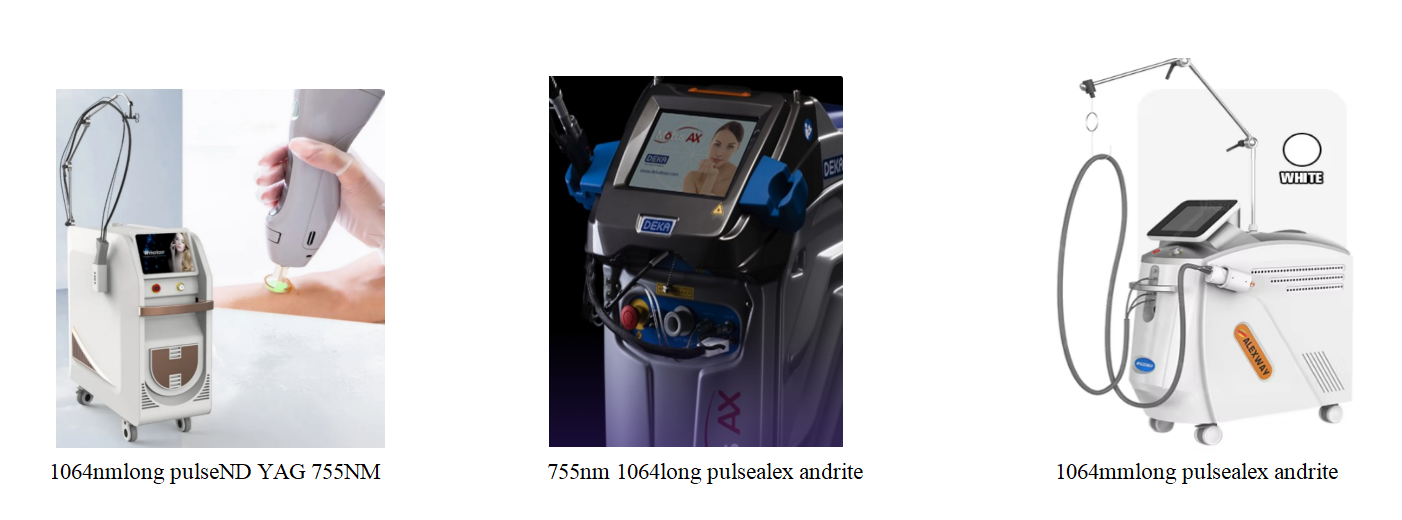
(3)Hair removal fiber optic instrument handle
Hair removal fiber optic connection machine and handle, ensure that the fiber optic connector matches the interface of the laser equipment when selecting the fiber optic. The handle with DCD gas cooling function can work before and after each laser pulse, protecting the skin and avoiding skin burns, making it more comfortable and safe.
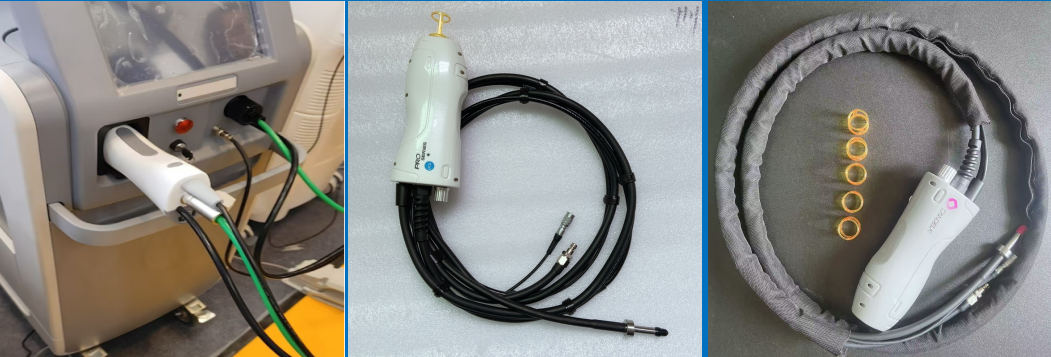

5.How to choose the appropriate hair removal fiber for laser hair removal machine?
(1)Determine the parameters of laser equipment
Laser wavelength: Different wavelengths are suitable for different skin types and hair colors.
755nm (Alexander laser): suitable for light skin and fine hair.
810nm (diode laser): suitable for most skin types, with strong versatility.
1064nm (Nd: YAG laser): Suitable for dark skin and coarse hair.
Laser power: High power equipment requires fiber optics that are resistant to high temperatures and have high stability.
Pulse width and frequency: Ensure that the fiber can support the pulse parameters of the equipment.
(2)Select fiber type
Quartz fiber: high transmittance, suitable for most hair removal lasers. Good flexibility and easy operation.
Sapphire fiber: resistant to high temperatures, suitable for high-power lasers. High hardness, suitable for precision operation.
(3) Determine the diameter of the optical fiber
Large diameter optical fiber (such as 600 μ m-2000 μ m): suitable for large-area hair removal with uniform energy distribution. The treatment speed is fast, but the precision is low.
Small diameter optical fiber (such as 300 μ m-400 μ m): suitable for delicate areas (such as the face, bikini line). Energy concentration, suitable for high-precision treatment.
(4)Check compatibility
Equipment interface: Ensure that the interface between the fiber optic and laser equipment matches (such as SMA905, D80 interface).
Wavelength matching: The transmission range of optical fiber needs to cover the laser wavelength.
Power compatibility: Fiber optic cables must be able to withstand the highest power output of the equipment.

6.KINZ Laser Hair Removal Fiber Product Series
Jinzhi can provide fiber optic cables for various hair removal devices and offer customized services.
Adopting domestic and imported optical fibers, as well as high-precision fiber polishing technology, to meet the different requirements of customers.
(1)Hair removal fiber optic jumper


(2)Hair removal fiber tail fiber for calibration
The D80 fiber tail is used to check and adjust the position of the laser in the fiber. Incorrect alignment may damage the fiber optic cable.

(3)D80 Connector

(4)SMA905 connectors and other types of connectors

7.Fiber selection for hair removal provided by KINZ
(1) Circular fiber: Good beam quality: The symmetrical structure of circular fiber can better maintain the beam quality of laser and ensure that the laser accurately acts on hair follicles. Mature manufacturing process: The manufacturing process of circular optical fibers is relatively mature, with lower costs and more stable quality. Circular optical fibers have good compatibility with optical systems
(2) Square fiber optic: With high geometric accuracy, it can solve problems such as pattern matching, spot homogenization, and fiber bundling in specific applications. It can provide customized services and has a wide range of applications. High treatment efficiency, uniform energy distribution, and efficient large-scale hair removal.


8.Fiber optics are widely used in the beauty industry due to their high efficiency, precision, and minimally invasive characteristics. The following are some of the main uses and their principles
(1)Laser therapy and energy transfer
Hair removal: Fiber optic transmission of specific wavelength lasers (such as 1064nm Nd: YAG laser) selectively destroys melanin in hair follicles, achieving precise hair removal and reducing epidermal damage.
Rejuvenation and freckle removal: Pulsed light (IPL) or dot matrix laser is transmitted through optical fibers to promote collagen regeneration, improve pigmentation, fine lines, and acne scars.
Vascular therapy: Fiber optic laser transmission (such as 585nm/595nm pulsed dye laser) can target hemoglobin and treat red blood vessels, vascular tumors, etc.
(2)Photodynamic therapy (PDT)
Acne treatment: Fiber optic transmission of blue/red light activates photosensitizers (such as aminolevulinic acid) applied to the skin, kills Propionibacterium acnes, and inhibits sebum secretion.
Skin precancerous lesions: such as photodynamic therapy combined with fiber optics for the treatment of solar keratosis.
(3)Minimally invasive surgery and endoscopic assistance
Laser lipolysis: Fiber optics penetrate deep into the subcutaneous fat layer, emitting laser energy to liquefy fat, which is then used in conjunction with aspiration or metabolism for body shaping.
Facial lifting: Fiber optic fibers are introduced through minimally invasive incisions, and laser thermal effects are used to stimulate collagen contraction, achieving tightening and lifting (such as gold microneedles).
(4)Phototherapy beauty equipment
LED light therapy facial mask/instrument: optical fiber evenly distributes LED light source (red light/blue light/near infrared light) to promote cell metabolism, diminish inflammation or relieve sensitive muscles.
Home beauty device: Fiber optic combined with micro current or radio frequency enhances energy penetration depth and improves anti-aging effect.
(5)Embroidery and semi permanent makeup
Precision pigment implantation: ultra-fine fiber needle will introduce pigment into the epidermis, reduce the trauma of traditional embroidery, and be used for eyebrow, eyeliner, and lip makeup.
(6)Postoperative repair monitoring
Fiber optic sensor: Real time monitoring of parameters such as skin temperature and pH after treatment to prevent excessive thermal damage and optimize the rehabilitation process.

Welcome to our company's industrial application solutions.
For further technical knowledge and product information, the contact information is as follows:
Toll Free: 400-160-8187 Email: sales@fiberkinz.com Website: fiberkinz.com